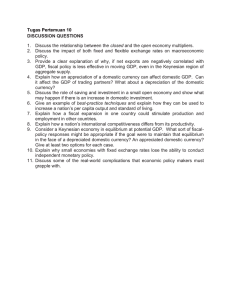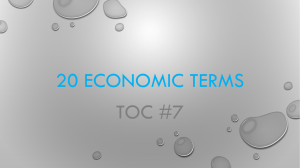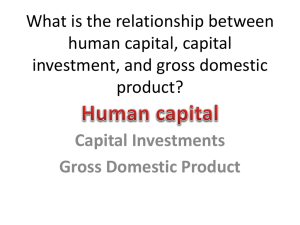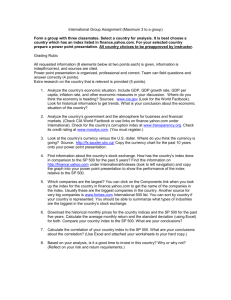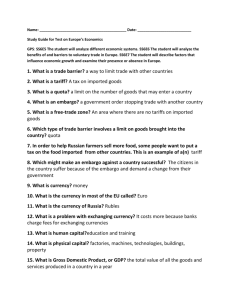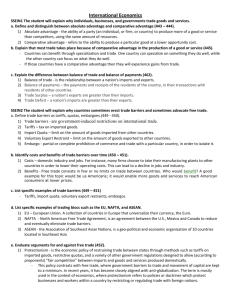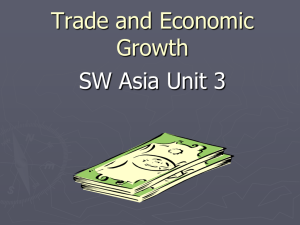Economic Systems: Cornell Notes & Trade Barriers
advertisement
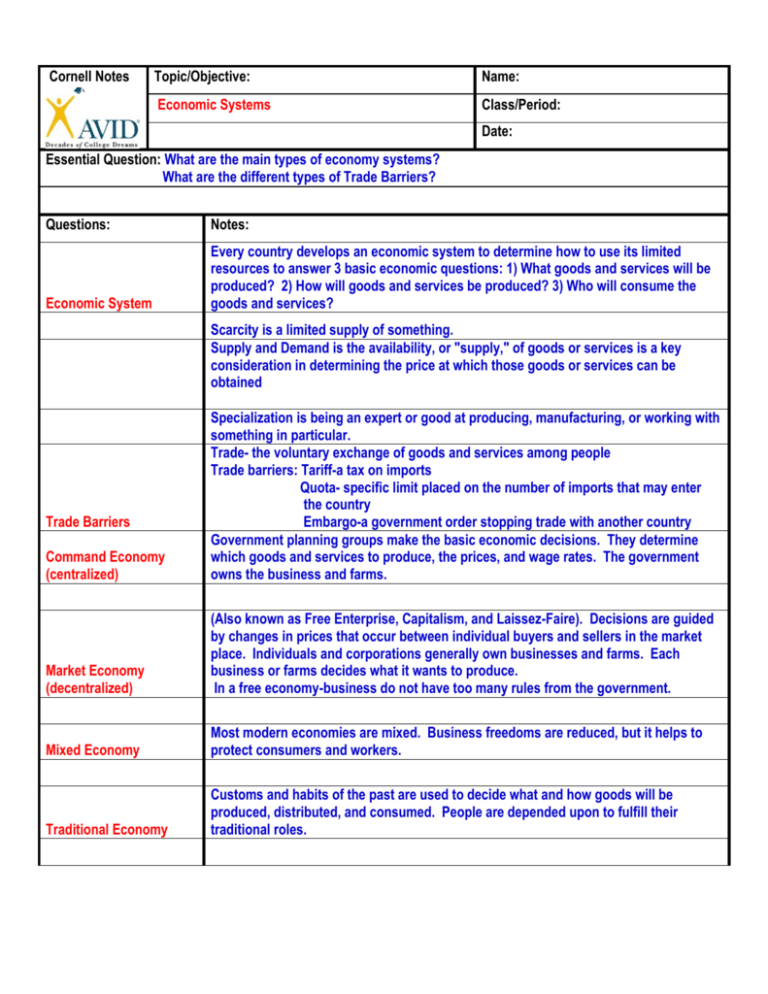
Cornell Notes Topic/Objective: Name: Economic Systems Class/Period: Date: Essential Question: What are the main types of economy systems? What are the different types of Trade Barriers? Questions: Notes: Economic System Every country develops an economic system to determine how to use its limited resources to answer 3 basic economic questions: 1) What goods and services will be produced? 2) How will goods and services be produced? 3) Who will consume the goods and services? Scarcity is a limited supply of something. Supply and Demand is the availability, or "supply," of goods or services is a key consideration in determining the price at which those goods or services can be obtained Command Economy (centralized) Specialization is being an expert or good at producing, manufacturing, or working with something in particular. Trade- the voluntary exchange of goods and services among people Trade barriers: Tariff-a tax on imports Quota- specific limit placed on the number of imports that may enter the country Embargo-a government order stopping trade with another country Government planning groups make the basic economic decisions. They determine which goods and services to produce, the prices, and wage rates. The government owns the business and farms. Market Economy (decentralized) (Also known as Free Enterprise, Capitalism, and Laissez-Faire). Decisions are guided by changes in prices that occur between individual buyers and sellers in the market place. Individuals and corporations generally own businesses and farms. Each business or farms decides what it wants to produce. In a free economy-business do not have too many rules from the government. Mixed Economy Most modern economies are mixed. Business freedoms are reduced, but it helps to protect consumers and workers. Traditional Economy Customs and habits of the past are used to decide what and how goods will be produced, distributed, and consumed. People are depended upon to fulfill their traditional roles. Trade Barriers Free Trade Zone North American Free Trade Agreement (NAFTA) International Trade and Currency Gross Domestic Product and Human & Physical Capital A free trade zone is when there are no tariffs between countries (example would be if you are a member of the European Union In 1994, the governments of the United States, Canada, and Mexico signed an agreement called NAFTA, which took away all tariffs on goods traded among the three countries. In doing so, this helped to increase trade among the countries (Free Trade Zone) which leads to higher standard of living for all three countries. Currency is the money people use. Most European Union countries use the Euro which makes trade easier. If a country has its own currency, it must exchange it to the type of currency where the goods and services are purchased. Gross Domestic Product (GDP) of a country is the total value of all the goods and services produced in one year. The GDP tells how rich or poor a country is. The GDP can also tell if a country’s economy is getting better or worse. To increase GDP, countries must invest in human capital (education, training, skills, and health of workers). High literacy rates helps increase standard of living (economic level). To increase GDP countries must also invest in physical capital. This includes factories, machines, technologies, buildings, anything that helps keep workers safe and machines running properly so people can do their jobs. Summary: Don’t forget summary (4-8 sentences)
